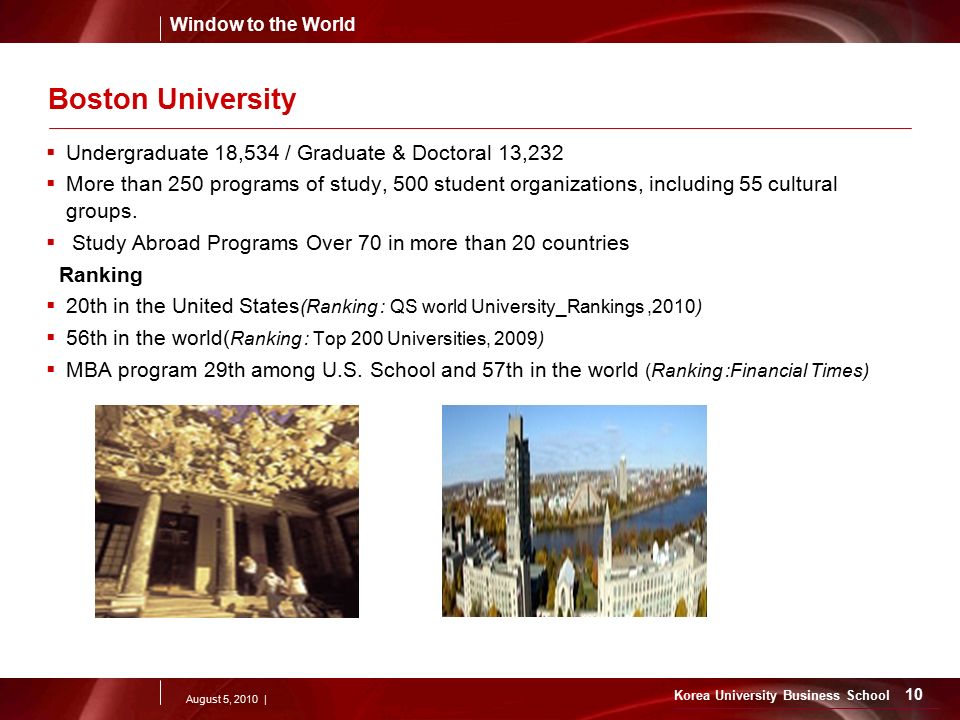
Similarly if you find a program with a high acceptance rate and a high yield, you can assume that its admits had no better options and that the admissions office was not that selective. This indicates that while the admission offices at these two schools might care about yield to some extent, they are not willing to sacrifice the quality of their potential student body in order to improve their yield. Obviously those admitted to Haas and Yale had other options that they chose to exercise, but more significantly it means that Haas and Yale admissions want to get who they perceive as the best students even if it means having a relatively unimpressive yield. Some highly ranked schools, Haas and Yale being two of the best examples, that are difficult to get into have relatively low yield rates. Yield should be evaluated in comparison to acceptance rate. If you are going to be an intelligent investor in this market, you need to understand the market not for some abstract reason, but because doing so will enable you to determine where is best for you to apply and to go. Just as average post-MBA salary reveals the market value of the degree, the number of applications reveal each business school's ability to attract customers (applicants are customers- they are buying the right to be considered for admission) and the yield measures the rate at which a select group of customers (admits) offered the right to exercise their option for admission choose to do so.
TOP RANKED MBA PROGRAMS 2009 SERIES
of Virginia: Darden, UBC: Sauder, UC Berkeley: Haas, UCLA: Anderson, UNC: Kenan-Flagler, USC: Marshall, Yale School of Management, and York University: Schulich.Īs I have suggested elsewhere in this series of posts, when looking at any ranking, I think it is critical to look at actual market conditions. of Management, Dartmouth College: Tuck, Duke University: Fuqua, ESADE Business School, Harvard Business School, HEC Montreal, HEC Paris, IE Business School, IESE Business School, IMD, Indiana University: Kelley, McGill, Michigan State: Broad, MIT: Sloan, New York University: Stern, Northwestern U.: Kellogg, Queen's School of Business, RSM Erasmus University, SDA Bocconi Italy, Stanford University GSB, Thunderbird, U. For sources for the rest of the data, see " Difficulty Rank", "Averaged Rank", and " Post-MBA Salary Rank." The following programs were ranked:īrigham Young: Marriot, Carnegie Mellon: Tepper, Columbia Business School, Cornell University: Johnson, Cranfield S.

Since Businessweek only lists percentages of admitted and enrolled, I have calculated the number of admitted and enrolled. "Number Admitted," "First Year Enrollment" &"Acceptance Rate" data: For US, US News & World Report (2007) & for non-US & Kellogg, Businessweek (2006). Taking the 39 "Top 20" programs that provide data on their acceptance rates ( see my earlier post on acceptance rates for the "Top 20 programs that did not provide such data), I put the tables below together. As I discuss below, yield measures the behavior of admits. Yield, the number of accepted applicants who actually enroll, is the single best measurement of relative program popularity among admits. While I would never suggest making application decisions based simply on what other applicants do, as I will explain below, it is quite helpful to look at the number of applications when reviewing other core admissions data (number admitted and yield).


Ranking by the number of applications is a crude, but clear, measure of the relative popularity of a program. Click here for all of my rankings tables together in one post. After ranking by post-MBA salary, comparing "Top 20" rankings, ranking by averaged "Top 20" rank, and ranking by acceptance rate, I thought it would be useful to rank "TOP 20" MBA by number of applicationsand by yield.


 0 kommentar(er)
0 kommentar(er)
